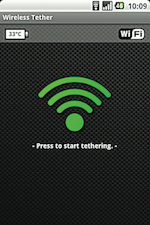Introduction
Last November at Future Forward 2010, Matrix’s Antonio Rodriguez gave us an inside look at his VC backpack. In it were the usual devices you would expect: iPhone, Droid, iPad, iPod, Kindle, Netbook, MacBook, etc... He opened the discussion with a simple question: “why doesn’t this sh!t work together?”
His question was both humorous and revealingly true.
Many of us have been fans of the Lord of the Rings strategy to computing: one device to rule them all. But over time, it has become increasingly clear that no single platform or profile will meet all our needs. The e-book reader provides the user experience we want when reading a book; a laptop the power we require for hard core computing; the smart phone the small footprint for mobile connectivity; the music player the strap-on experience for the gym; and the tablet the form factor for our meetings.
Device Proliferation
But there are two challenges with the rapid expansion of personal computing devices:
- Data sharing - While each device provides mechanisms for sharing data, they almost never provide seamless interoperability.
- Connectivity - We already pay for internet connectivity for our home and phones, so why do we need to pay again for each device we want to connect to the grid? And as much as I like the Kindle model of bundled connectivity, its cost of goods applicability is limited.
My Personal Usage
In thinking about my current usage of computing, I realized the following are true for me:
- My data is in the cloud - I don’t know exactly how or when it happened, but some time in the last two years, my gigabytes of personal data moved off my local hard drives.
- My 3G network is always on & good enough - No matter where I travel, I have reasonable 3G connectivity. I’m not saying I like the performance of 3G. AT&T 3G in Boston averages 1259 kbps for downloads, 708 kbps for uploads; Verizon 3G averages 957 kbps down, 407 kbps up. This performance may be insufficient for many needs, but is surprisingly good enough for others.
- All my devices are WiFi-enabled - In a world in which we have WiFi-enabled pill bottle caps, it will come as no surprise that all our devices support wireless networks. All my personal devices are of course no exception.
My Solution: WiFi Tethering
So today I decided to setup the missing link for my personal mobile data center: WiFi tethering. The configuration works like this:
- I configured my 3G phone with open sourced wireless tethering software (e.g. android-WiFi-tether)
- I exposed an externally accessible wireless network from my phone via the tethering software
- I configured each of my devices to use my new 3G wireless network
I won’t bring you through the details of configuring your tethering solution - all of this can be gleaned via Google (and is dependent upon your phone and carrier). But the result is that now, no matter where I go, I have “good enough” WiFi connectivity from all my devices, delivered over 3G via my smartphone.
Parting Thoughts
The powerful combination of mobile computing, the cloud, and mobile broadband will enable us to cost effectively stay connected to the grid where ever we go. In the mean time, WiFi tethering provides a viable interim solution while we wait for the next-generation technologies (super WiFi?) to mature. So while I cannot have one device to rule them all, I'll at least settle for one 3G to keep them connected.
I'd like to give a shout out to local UNH PhD student, Sofia Lemons, for her contribution to the open sourced android-wifi-tether project.
